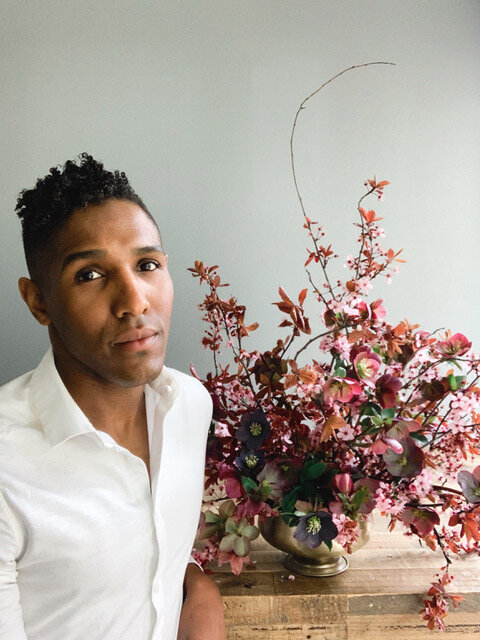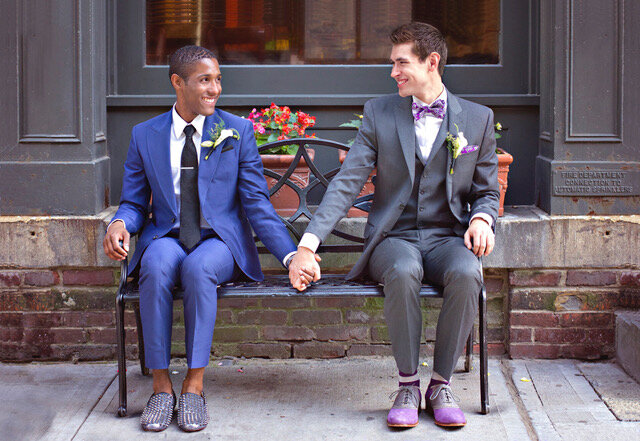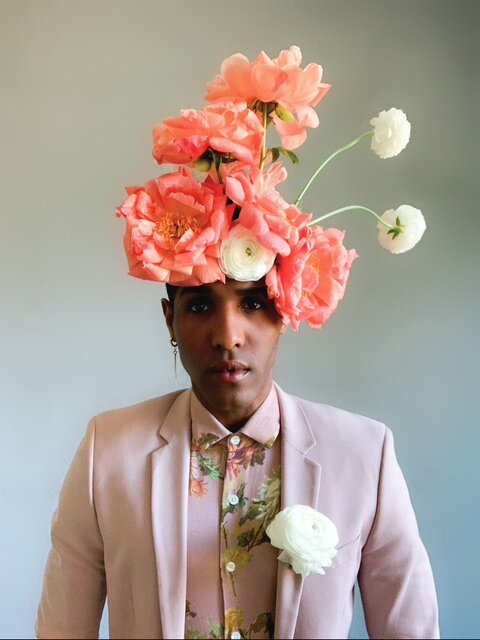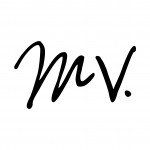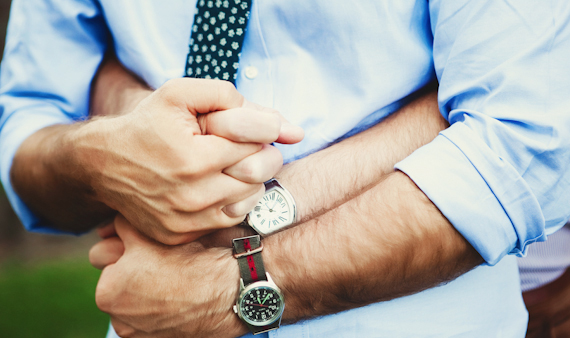The Kristen Griffith-Vanderyacht Interview with Jason Mitchell Kahn
JMK: Before either of us were in the world of weddings we met in theater. Kristen was an actor in a play that I wrote THE BOYS UPSTAIRS. As my career evolved into being a wedding planner, I learned that so many of my industry colleagues also had a background in theater. Can you describe how the process of transitioning from being an actor to a floral designer happened for you?
KGVY: I think the main thread between the two is about connecting with people through art. It’s about using your art to express yourself. That's what theater was for me- an opportunity to really use whatever talents that I had as a form of expression. In a live performance, you connected with the audience so you received immediate feedback. The same relationship exists between the designer and the client. You create something for them. You give it to them and they give you feedback with the “oohs” and “ahhs” and claps and cheers. Another element is control. It was about wanting to have more control over my art. I found that florals presented a unique opportunity to create something and step back from it to gain perspective. Theatre, on the other hand, is all about being in the moment. The audience claps and cheers but you actually don't know what you sound like to them. You can't really tell unless you're watching yourself on a video. You can't ever get the perspective that you do when you create a piece for an event. I found that to be a much more satisfying artistic experience and that is why I feel like transitioning from theater to design has been super easy for me.
JMK: Before that happened did you have hands-on experience specifically working with flowers?
KGVY: I was going to grad school at Columbia University. While I was there, I had free time. Prior to that I had been exploring floral design on my own . It started as a hobby and evolved into a passion. I began to develop my own taste and make bolder choices. When I was in grad school, I interned at a flower shop. I went to school three days a week so the other two days I went to the flower shop. I soon realized it can be so much more. It was a very clear sign that I should be a designer and not a therapist.
JMK: You start a business in New York initially as a small entrepreneurial experiment. How did you grow it into what it has become?
KGVY: I translated what my experience was like planning my own wedding into a business model. I relate very strongly to bold visuals and storytelling. I really focused on creating a strong visual presence. That’s what I responded to when I was planning my own wedding. When I started my own thing, my focus was always on telling a really beautiful story so people felt inspired to hire me.
JMK: While building your career you fell in love and got married. Tell me more.
KGVY: We met In New York city. He was a theatre kid and a special education teacher at a school in Brooklyn which I loved 'cause I really didn't want to date anybody in the industry, but I thought it was great that he knew all the references that only theatre people know. It made it easier for him to get my jokes! He was super supportive when I was going to grad school and when I decided to drop out and do flowers full time. It's really a privilege honestly. Because I know that is not the case for other couples. It allowed me to focus on the business in the way that I needed to, which was one hundred percent.
We got married in 2013, I did the flowers for my wedding. It was so much fun even though it was a lot of work. I would have had more… with flowers “more is more!” We got married at Brooklyn Bridge park overlooking lower Manhattan. The ceremony was outdoors and was very quick. I recall many discussions saying twenty minutes or less because it's New York City at the end of June and it's going to be hot as all get out so nobody needs to melt. The reception was at Dumbo Loft which is an “a la carte” space. They provide you 4 walls and a ceiling. That's it! Butterfly Bakeshop did the cake and I made sugar flowers for the cake. You heard right. Honey, I went to that cake supply store and I taught myself. She’s a crafty queen!
JMK: And eventually you expanded as a family?
KGVY: We moved to Seattle in 2016, because I was not going to have any babies in New York City. Can you imagine me with five screaming kids on the subway with an armful of Whole Foods bags trying to get a stranger to help me up the stairs with the stroller? The move from New York was about where we wanted to lay our roots. I love New York City, but I knew that with my temperament it was not going to work to have babies.
JMK: What has the experience been like for the two of you becoming parents?
KGVY: it's been a...journey. We went through the foster-to-adopt program out here in Washington. That is a long process, like 18 months, in terms of when you start fostering the child to the time they become legally free to adopt to then actually finalizing your adoption. But it was all worth it. We have this amazing little guy and we couldn't be happier.
JMK: Has anything changed for you in the current world of being asked to stay at home?
KGVY: Everything has changed. We now have dedicated time to spend together. It has helped me realign my priorities and my relationship with time. I get up two hours earlier than when he wakes up so I can work.
JMK: Do you and Aaron ever have moments as two gay dads where some sort of experience or something you're expected to do feels very heteronormative?
KGVY: I think a lot of our home life feels heteronormative because we were raised by two straight parents, so a lot of our traditions are built on what we experienced as kids. Our roles, on the other hand, are not very heteronormative in terms of what our parents expereinced. We split everything down the middle. When our son was a baby, Aaron would watch him one night, I'd watch the next night and so on.
JMK: After I became a wedding planner and you became a floral designer; we had the great pleasure of getting to do a few weddings together. Our paths crossed again a few years later when we were both being considered for a TV project that neither of us ended up booking. For you that opened the door to your latest project. Tell me about Netflix’s The Big Flower Fight.
KGVY: I was offered the job and four weeks later was in London shooting.
JMK: It truly is a feel-good competition show, but I can’t imagine when you were shooting that anyone would have predicted that it would premiere during a pandemic when people all around the world were being asked to stay home. Do you think that affected the reaction to the show?
KGVY: I think it allowed for more eyes to hit the show in the beginning. It attracted people who were looking for something easy to watch that’s inspiring and uplifting. It’s not the type of reality TV to see drama and fighting.
JMK: What was it like being the host versus the one who's actually making the flowers?
KGVY: I had never done television before, so I didn't have a barometer of what to expect. My experience was really magical. They made a point to emphasize that I'm the expert. I helped set the challenges and what the standard was going to be and they wanted my input on every level. They completely trusted me when it came to the judging. It was awesome.
JMK: I've always known you to be very unabashedly authentic and speak truth to power. How do you feel now as a black person who has a platform?
KGVY: I don't feel like I have a greater obligation. I've always felt called to be vocal about what I've been seeing politically and socially.. Right now is an “awakening”, not just for white people, but for every single person who is becoming aware of how racism has played a part in our society. There are a lot of connections being made between the civil rights movement, the LGBTQ movement and human rights in general. They're actually all connected. Racism hurts everyone.. It is good that people are making a conscious effort to change the narrative. In order to do that all of us, black people included, have to hold the mirror up to ourselves. We have to ask ourselves, how have I benefited from this system, how have I Been depleted or disadvantaged by this system and then ask what can I be doing to make it better? Then do the work to make the change.


